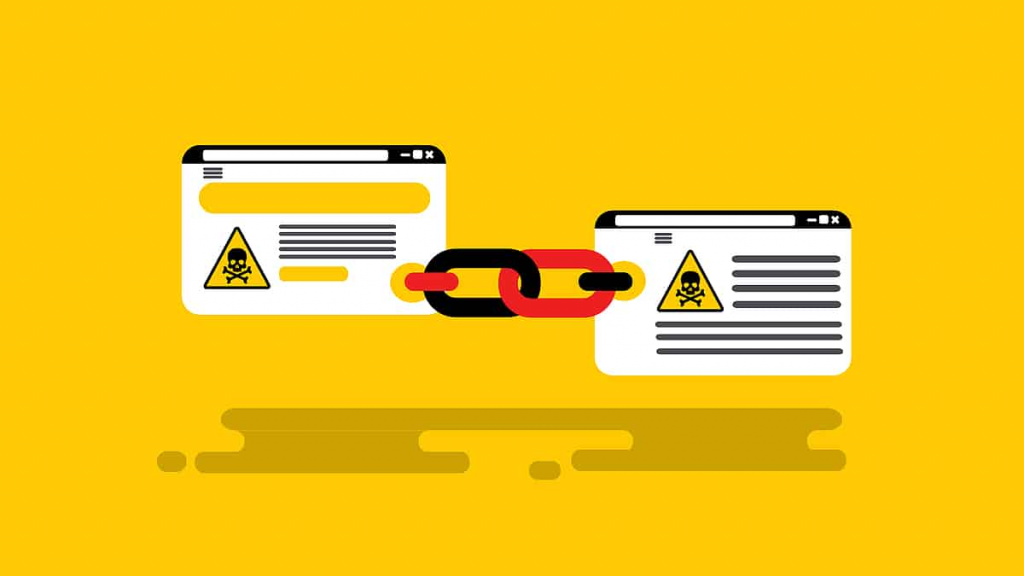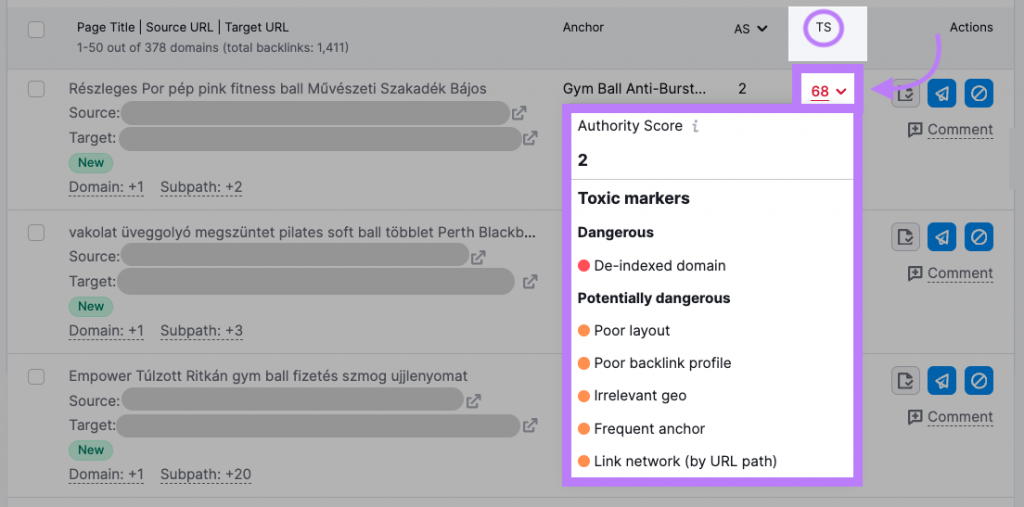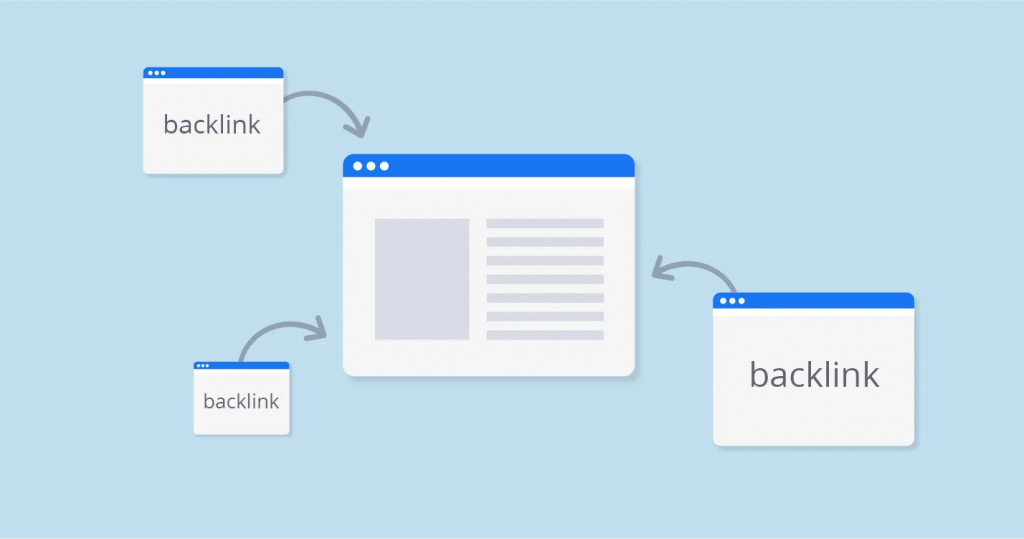SEO is one of the most essential parts of online businesses, being a decisive factor in your revenue and rankings compared to your competitors. But to dominate the search engines and generate more organic traffic, creating a solid link-building strategy is indispensable.
The links you feature on your website and third-party pages can drastically impact your search engine rankings, for better or worse. The Google search console constantly evaluates link exchanges and the pages you feature on your tabs to identify toxic backlinks and other kinds of bad links.
If you want to get the best results on the search engine ranking and highlight your business, this article is for you. We will show you everything you need to know about link posting and how to avoid all kinds of toxic links.
Follow all the steps and tips carefully, and you won’t have to worry about Google detecting your links as harmful. Here’s the definitive guide on generating links to your site:
Why SEO Is So Important

There are several reasons why SEO is such an important part of online marketing. Investing in this organic traffic solution can be the key to increasing your sales and making your business known to more potential customers.
Most people worldwide use the internet when looking for a solution to their problems, whether it’s a service or product, so making your brand known is a necessity. Every industry is extremely competitive, and multiple companies compete for the same clients daily.
One example of how important this practice can be is that, according to Oberlo, only 0,63% of the users looking for a product or service click on the second results page on the search engine. If you want to drive traffic and keep your business healthy, you need to appear on the first page.
Moreover, Forbes says that first-page results have a click-through rate of over 27%, while second-page results have only 15%. The higher you rank, the higher your CTR will be.
This scenario makes SEO critical to raising awareness and making your brand the customers’ first choice. Ranking at the top of Google search results might be challenging, but these efforts bring numerous benefits. Since it’s so hard to be the first item to appear when people search for a specific term or keyword, being the #1 result ensures that you have quality content and are a trustworthy option.
What Are Backlinks

Backlinks are one of the most critical parts of any SEO campaign. As we mentioned, link-building is directly related to your page’s score on SERPs.
Backlinks are also called incoming links, and they regard any kind of link on an external website that takes the user directly to your page. For example, you can be a laptop company and have a backlink to your website posted in an article about the best tech solutions of 2024.
Google highly values this kind of interaction, and it’s one of the main aspects they look into when validating trustworthy sites. That’s why creating a backlink profile and link networks is a priority when crawling search rankings.
Semrush’ article states that backlinks are one of the most important aspects Google considers when ranking your website. Along with these links, the items you should pay attention to are:
- Content Quality
- Backlinks
- Search Intent
You can also see this importance when analyzing the top results of the search engine. Top results usually have about 3.8 times more backlinks than other pages, showing how impactful this practice is in your SEO strategy.
But you need to be careful when exchanging links or between websites. If Google notices suspicious activities or that you’re just creating spam links to manipulate search engine rankings, the results will be the opposite of what you expect.
What Are Toxic Backlinks

As the name suggests, toxic backlinks or negative links are those potentially harmful links that lead to your website. They can be considered harmful for a series of reasons, whether because the website they’re featured on is unsafe or any other reason.
These bad links negatively affect your page’s visibility and decrease its score on the search engine. This happens when the platform detects that the website violated Google’s webmaster guidelines or when your site receives unnatural links just for SEO purposes instead of creating quality content that benefits the user.
Every linking site will be analyzed by Google to attest authenticity and how valuable it is for your content. The platform also allows you to track how toxic your website is regarding bad backlinks and which ones should be worked on if you want your score to increase.
Even though linking to multiple sites can bring several good results and increase your organic traffic, it is much preferable to have a few quality links than several spammy links that will make your rank go down.
Consequences of Featuring a Toxic Link

If the search engine spiders detect any backlink toxic material or negative SEO practices, your website might face consequences that impact its visibility and performance. Here, we will show you some of the main threats of low-quality link-building and their effect on your website.
Here are the main dangers of featuring low-quality backlinks:
Score Decrease
The most obvious consequence is that your SEO rank will drastically decrease, making it harder to reach the top of SERPs and giving your competitors a clear advantage when generating new leads and acquiring potential customers.
Every time your website gains links, Google will verify its origin and all the information regarding the other sites that are redirecting to your page. If Google does it to identify bad backlinks and confirm any kind of unethical practice, your score will automatically go down, impacting your entire SEO campaign.
Remember that Google’s score regards the entire website. You can have a perfect SEO, but if you’re featuring spammy sites or any bad linking practice, all the other parts will be affected, including content quality and keyword research.
Website Suppression
One of the most severe consequences of toxic backlinks is having your website suppressed on the search results page. In this case, customers can only find your page by manually typing the URL.
But this penalty is only reserved for the most severe cases that break more than one rule of Google’s guidelines. It is very unlikely to happen, but there have already been cases where this penalty was applied.
The suppression is not a lifetime, and you can reverse it once you fix toxic backlinks or any manipulative link-building practice that might be against the platform’s laws. It is also important to understand that this reversion is not immediate, and the time for your website to return to normal might vary. Also, the external links will still affect your score, so you’ll need to work on a solid SEO campaign to reverse this result.
Traffic Decrease
This is not directly caused by links pointing to toxic websites but is a consequence of the penalties applied. If your score decreases or your website gets suppressed by Google, you’ll instantly notice a drastic decrease in traffic to your website.
Everything gets impacted, from the number of new leads to the percentage of potential customers completing the sales funnel. This doesn’t mean your website will become a desert with no visitors, but you’ll surely notice an impact on daily visitors and how long they stay on your website.
Almost all penalties applied by Google will lead to traffic decrease in one way or another. To reverse this situation, make sure to address your toxic backlinks and bring everything back to normal.
Main Causes of Toxic Backlinks

Now, we will see the primary practices that can be considered against Google’s guidelines and be classified as toxic links. Make sure to take a look at each one carefully to ensure the best results when building links for your website.
This way, you ensure a good score and avoid problems with Google identifying sources as potentially harmful. Here are the main causes of toxic backlinks:
Paid Links

Paying for links is against Google’s guidelines. Link-building should be something spontaneous that contributes to the user experience and not something you sell, like an advertisement placement, at least not with SEO interests.
You can include paid links and collaborations on your pages, but this kind of content needs to be assigned as paid or sponsored content. This way, Google won’t consider the link when evaluating your link-building score.
There are two main kinds of qualifications for this kind of link
- Nofollow – Nofollow attributes are inserted directly into the HTML code. This command asks Google not to consider the selected link when evaluating your website score. This way, search engines ignore it even though it’s a paid link.
- Sponsored – Along with the nofollow link, you can also have a sponsored link. This explicitly tells Google that the link was bought and should not be considered when evaluating the final rank.
There are many paid link schemes, and Google constantly implements new tools to prevent these paid promotions from being used when linking page content. If you include the qualifications when inserting this kind of content, it shouldn’t impact link quality or your score.
Make sure to highlight it as nofollow when:
- Featuring digital advertisement
- Making influencer marketing
- Paying for link listing
- Making giveaways
Link Spam

As you expect, spam sites that just post links are also considered a toxic practice. This impacts the site owners featuring your link and your page since it is considered against the rules to try to manipulate Google’s rank.
Aggressive spam link-building is very common, and several websites are dedicated to this kind of practice. Whether for money or mutual favors, they will include a link to your website on their pages, along with hundreds of others.
These bad backlinks are some of the easiest to identify and can bring your score down shortly after being featured. When analyzing your links, make sure to look for spammy websites because they can negatively impact your entire strategy. Always look into your links to ensure good backlinks that will help your business grow and reach the target audience.
Reciprocal Link-Building

Reciprocal links and link exchange schemes are also against Google’s guidelines and will be highlighted as toxic backlinks. It is very common to see websites agree in trading spaces in their articles for blog comment links and practices like that. The objective is to try to benefit both parties and climb SERPs.
It is normal to link to websites that also link to you, but this might catch Google’s attention as suspicious activity. Of course, you can mutually link to other websites without affecting your score. But if Google notifies you or the other website saying that it’s a toxic backlink to manipulate rankings, make sure to remove it as soon as possible.
Search engines like Google have very accurate algorithms and AIs to distinguish between harmful backlinks and legitimate link-building. As long as you do it naturally, there’s nothing to worry about.
Adding Unrelated Links

If your article features random links that don’t relate to what you’re writing about, they will also be considered low-quality links. Unnatural links can appear in several places on your website, from articles to comment sections and forums, for example.
It lowers the quality of your content, making it look like you’re fooling the readers, redirecting them to a page that doesn’t relate to what they’re reading about. Because of this, these are also considered spam websites, and Google’s algorithm will classify them as toxic.
Ensure that you only feature natural links in all spaces of your website, whether they’re forum links or any other kind. Don’t forget you can always tell Google not to consider certain links, so your score won’t be affected even though you feature them. But be careful. Your readers and potential customers might still feel like they’re being fooled when creating this kind of artificial link-building that doesn’t relate to your content.
Hidden Links

It shouldn’t surprise anyone that Google also doesn’t allow the usage of hidden links on websites and content. Most people who use this kind of tool have bad intentions, whether to fool the SEO score or make people download malware.
The initial objective of hidden links in SEO was to manipulate search engines and their rank, so Google created clear guidelines prohibiting their usage. These links can have two main purposes: fooling SEO ranks or making users download undesirable files.
Both cases are bad, and if Google detects this practice, your website will be drastically affected. Make sure never to use them, regardless of the purpose.
Negative Backlinking Example

Your website can have toxic backlinks without you even knowing. Using a link scanning tool, it was detected that this website featured one dangerous link and five potentially risky backlinks on their tabs and articles.
This can drastically affect your score if these toxic domains are not addressed properly. Using the proper tool makes this task much easier, and if done on time, can detect it even before Google, ensuring it won’t impact your SEO strategy.
In this case, the tracker even tells the user why that specific backlink might be toxic. This way, you not only avoid problems but also understand why that link is toxic so you don’t make the same mistake again. The tool featured in the image is the Semrush Link Analysis Tool.
How to Get Rid of Toxic Backlinks

If you want to get rid of your bad links to increase your rank, there are different ways to do that. The easiest and most common way is through automated tools verifying all your backlinks, highlighting which ones are good and which are not.
One example is the Semrush Analysis Tool, which automatically verifies all aspects of your connections, looking for broken links, link spam, and other toxic linking. You can set everything up, and once you hit run, it will do the rest automatically for you.
There are also other methods for doing this, like manually analyzing all your links. This method takes time and is not very effective since you might not know whether a website is considered a good connection.
Moreover, some websites feature hundreds of backlinks throughout articles and other tabs, making the manual analysis a time-consuming process that is not worth it. There are several tools to help with this task. Search for the best one based on your needs and evaluate your backlinks.
Once you identify them, it makes it much easier just to remove toxic backlinks. This way, you’ll notice an enormous increase in your SEO score.
How to Get Rid of Negative SEO

If you want the best results in your SEO campaign, not only regarding backlinks but every other aspect, hiring a professional agency is recommended. This way, you ensure your marketing efforts are in good hands, helping you with research and every task needed for good search engine optimization.
At GamerSEO, we have the best professionals on the market, with years of experience, to ensure you reach your target goals in the most efficient way. Whether you need to get rid of toxic links or any other task, we can help you.
By joining the GamerSEO family, you ensure support from the beginning of the planning process to the end of your campaign. We create strategies aiming directly at your objectives and pain points, ensuring the best results.
If you want the best for your company and online results, we have everything you need. Let’s work side by side and create quality marketing together.
Time to Start Optimizing Your Backlinks

Search engines are a valuable ground for businesses of all industries. From helping with the competition to increasing sales, having your company known and appearing at the top of the results pages are indispensable for good performance.
One of the most important aspects of reaching this goal and making your business known on SERPs is backlinking. For a good score and ranking, ensuring quality links from trustworthy sources is important.
Toxic backlinks drastically affect your points on the rank, and several practices can contribute to this penalty. We showed you some of the most common actions that inflict Google’s guidelines for backlinks, but there are many others that need to be observed if you want a successful SEO strategy.
Now that you know everything you need, it is time to eliminate negative links to optimize your score. Follow all the tips above, and you’ll notice a positive impact on your score and performance on the results pages.

SEO enthusiast and digital marketing strategist. My expertise lies in optimizing websites for organic traffic growth and search engine visibility. I carry out, among others, SEO tests, keyword research and analytical activities using Google Analytics. Privately, he is a lover of mountains and bicycle trips.

